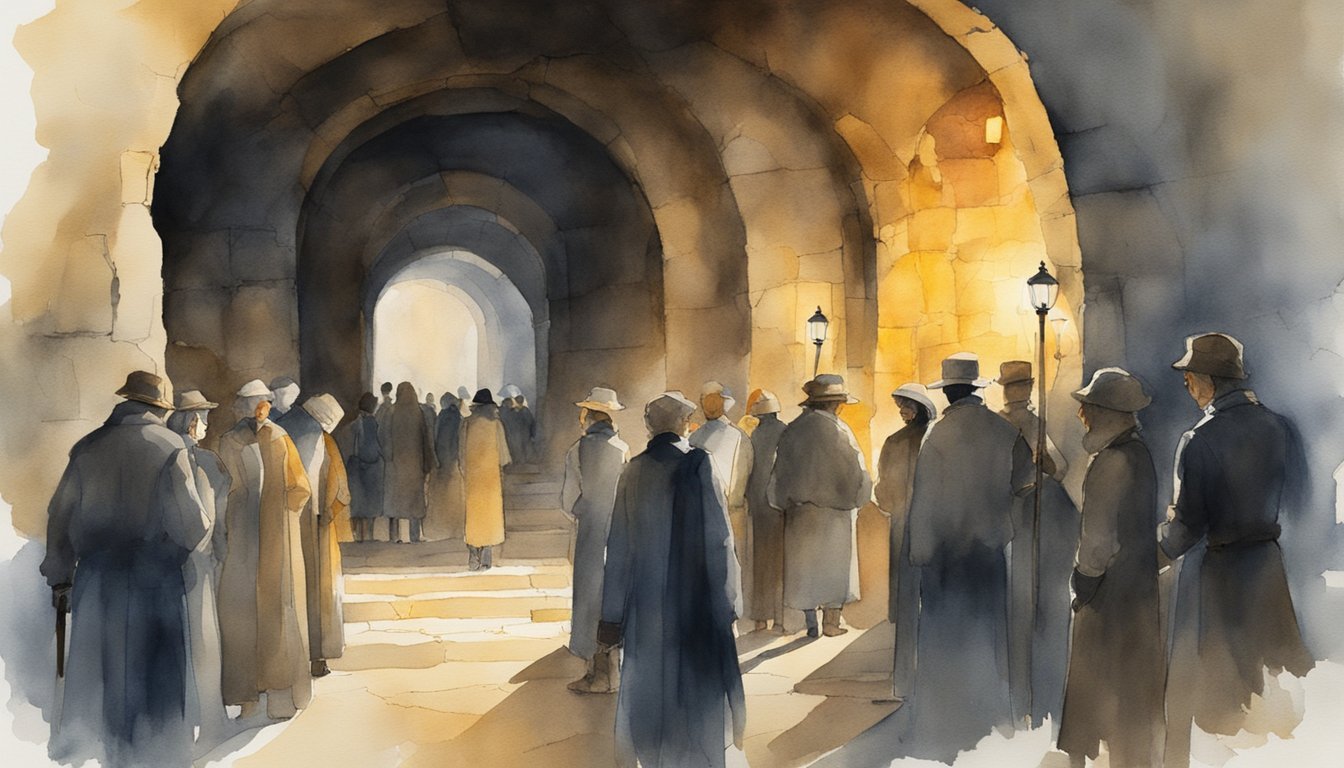Discovering the Catacombs
The Paris Catacombs are a remarkable and vast underground network that serves as a testament to the city’s historical approach to death and burial. A visit to this ossuary is a journey into the depths of Parisian history.
Historical Context
The necessity for the Catacombs arose in the 18th century, when Paris faced a critical issue with overcrowded cemeteries, which led to public health concerns. The overflowing Cimetière des Innocents and other church graveyards were causing infrastructural and sanitary problems in the city. During the reign of Louis XVI, the French government decided to relocate the bones to abandoned limestone quarries, parts of which were located directly beneath the city. This transfer of remains commenced in the late 18th century, around the time of the French Revolution, and continued until the mid-19th century, during Napoleon III’s time. The Catacombs became a novel solution to the city’s problems with mortality and cemetery space, transforming subterranean quarries into an ossuary which now contains the remains of over six million Parisians.
For those interested in the intersection of history and subterranean construction, the Catacombs of Paris entry provides additional insight into how these ancient mine tunnels were converted into burial spaces.
Exploring the Ossuary
Upon descending into the Catacombs, visitors enter a narrow, damp corridor leading to a vast network of tunnels. The walls of these tunnels are lined with neatly-arranged bones and skulls, primarily from the relocated Les Innocents cemetery. The transfer of bones was conducted with reverence and ceremony, and the arrangement of the remains was carefully managed under the watchful eye of Louis-Étienne Héricart de Thury, Paris Mine Inspection Service’s director. This has turned the Catacombs into a tableau of Parisian culture and history, evoking both awe and reflection on the nature of life and death.
The Catacombs are not just a resting place for the dead but also a canvas for historical episodes such as the French Resistance’s use during World War II, as well as a place of fascination for cataphiles, urban explorers passionate about the Paris underground. Visitors can see the Port-Mahon gallery, sculpted by a quarryman who fought in the siege of Port-Mahon, which features sculptures that depict the fortress of the city.
Those with a keen interest in this uniquely historical attraction can delve deeper into the narrative and visual representation at the official site of the Paris Catacombs.
Planning Your Visit

A visit to the Catacombs of Paris invites travelers to explore a unique subterranean world, steeped in history beneath the bustling streets of the city. This section provides essential visitor information and outlines the preservation regulations needed to ensure the safety and integrity of this historic site.
Visitor Information
The Catacombs of Paris, located off Place Denfert-Rochereau in the 14th arrondissement, are accessible via the Denfert-Rochereau metro station, with lines 4 and 6 serving this stop. The entrance is specifically at 1 Avenue du Colonel Henri Rol-Tanguy. For simplicity in planning, here’s a breakdown of the key information:
- Address: 1 Avenue du Colonel Henri Rol-Tanguy, 75014 Paris, France
- Metro Access: Lines 4 and 6 at Denfert-Rochereau station
- Opening Hours: Vary seasonally; check the official website for current hours
- Prices: Entry fees are required; for the most accurate pricing, visit their pricing page
- Age Restrictions: May not be suitable for young children due to the nature of the site
- Guided Tours: Available and include the use of an audioguide for an enriched experience
- Additional Tips: Wear comfortable shoes for walking and consider the temperature difference underground
Preservation and Regulations
To preserve the historical significance of the Catacombes de Paris, which houses the remains from the overcrowded Cimetière des Innocents and other Parisian cemeteries in a network of former limestone quarries, there are strict rules:
- Bag Size: Large bags and suitcases are prohibited; only small bags are permitted
- Restricted Areas: Follow signs closely as some areas are not accessible to the public
- Conduct: Be respectful and refrain from touching the decorations or inscriptions
- Hygiene: Modern facilities like restrooms may not be available once inside
For a complete list of regulations and how to best protect the ossuaries and historic decorations, consult the regulatory information before your visit.

